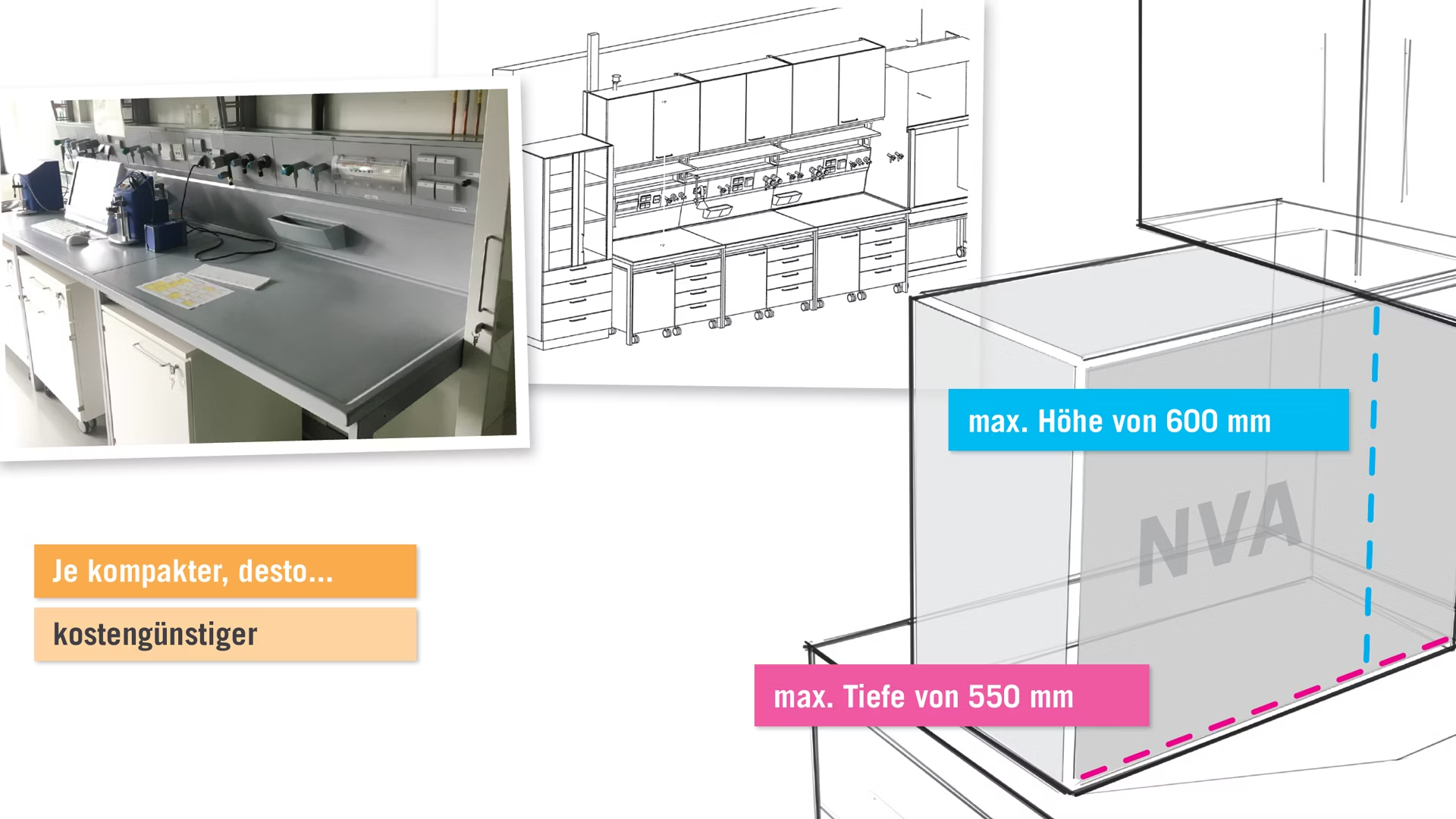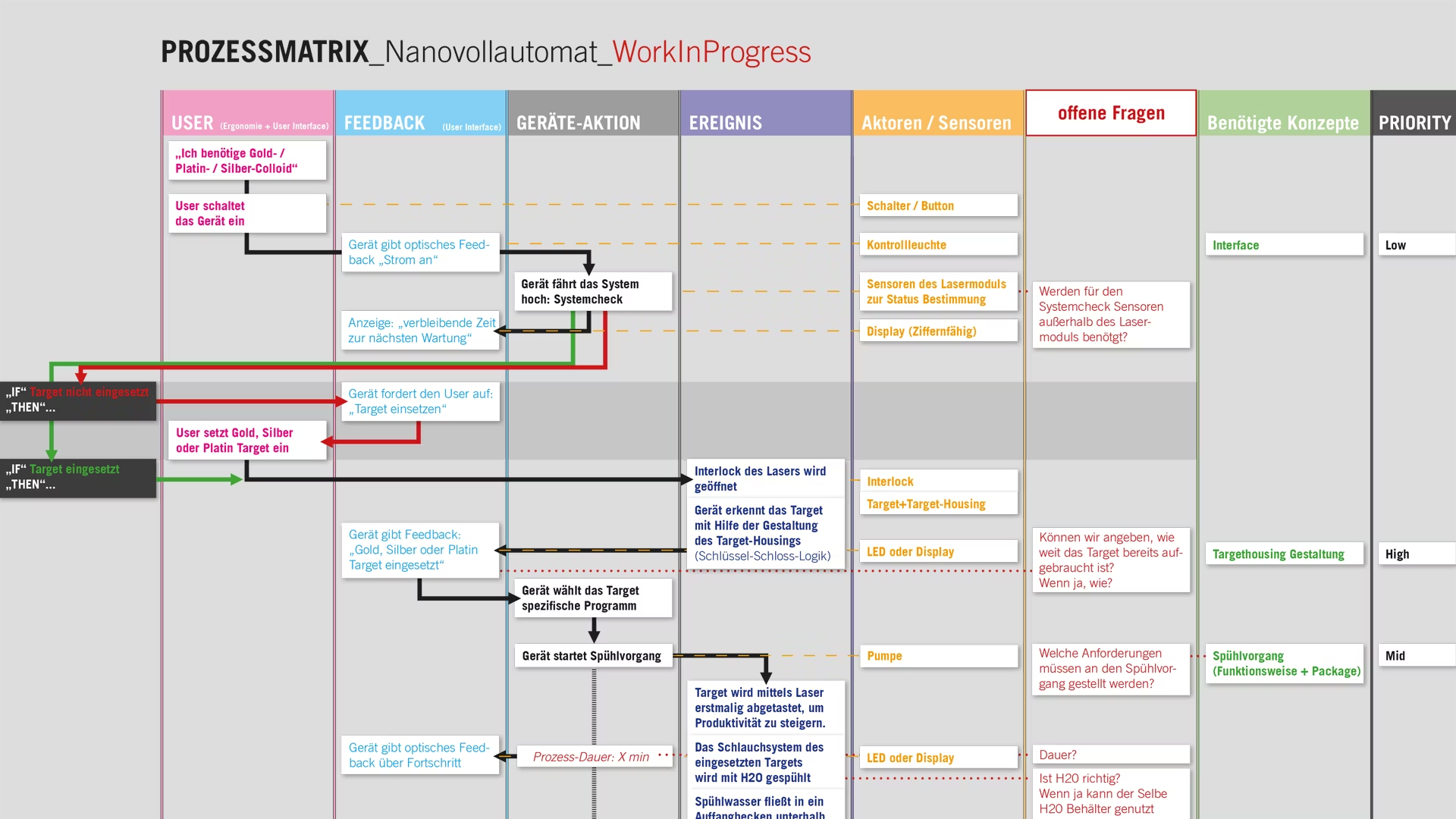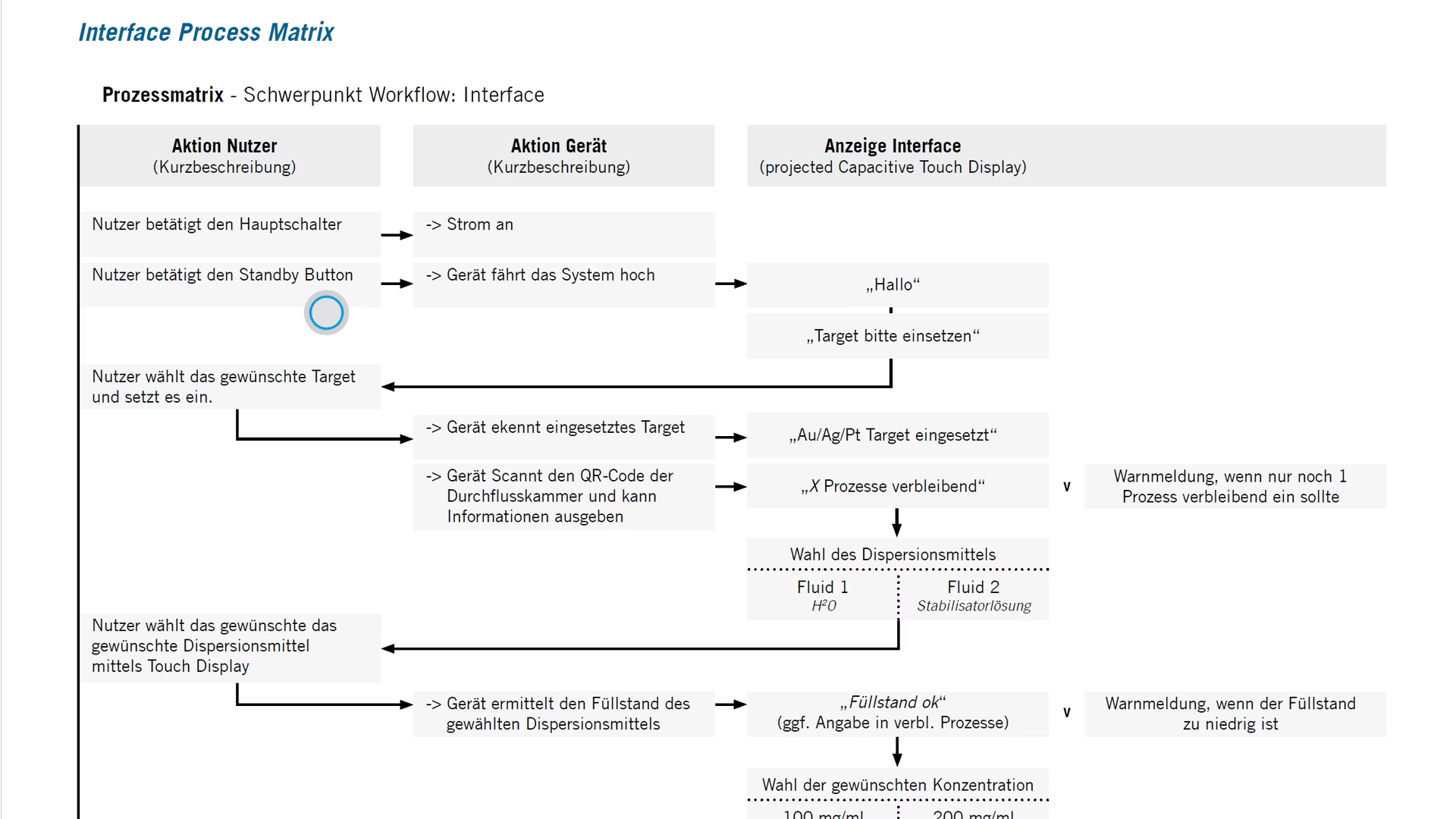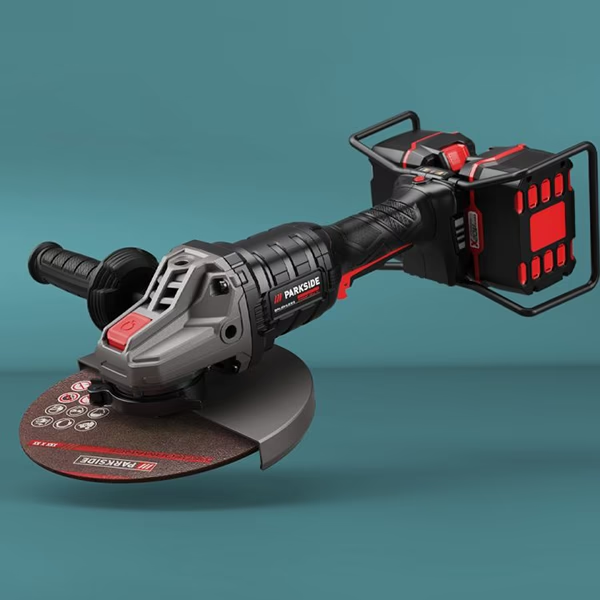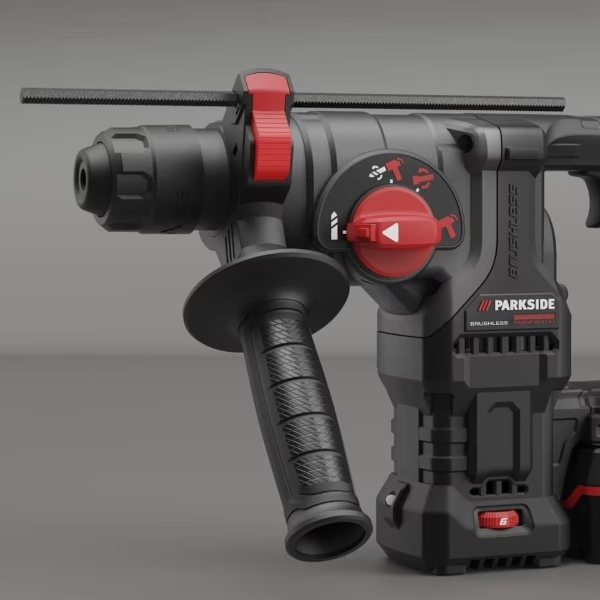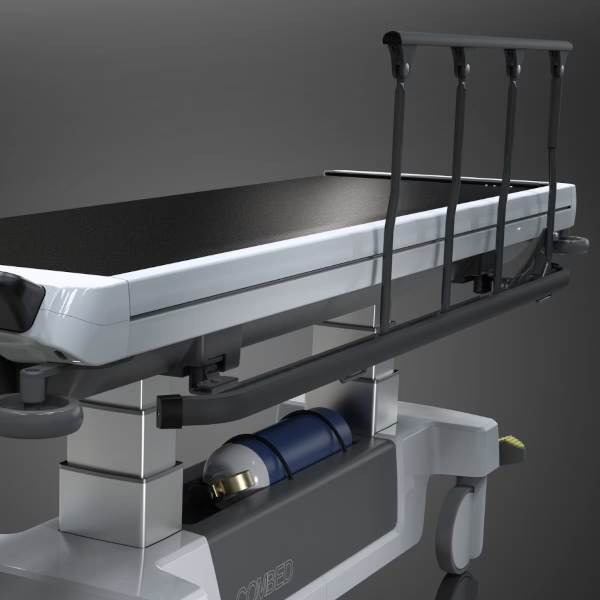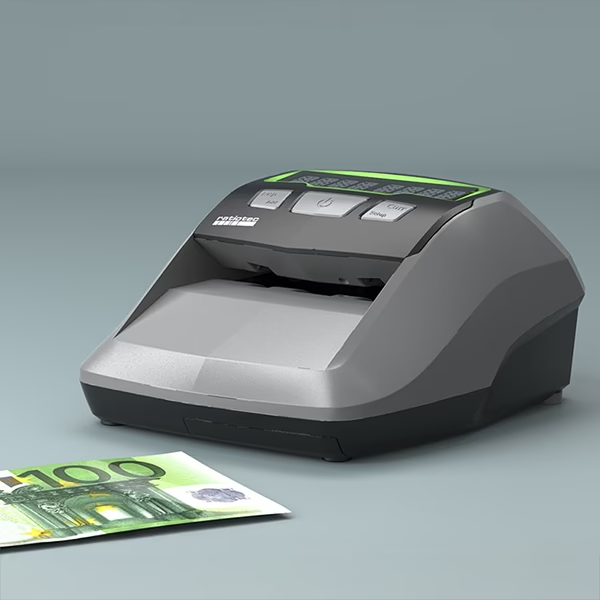Developed together, implemented in a targeted manner — interdisciplinary product innovation
By the end of 2020, together with the Department of Technical Chemistry at the University of Duisburg-Essen and the Company CryLas GmbH from Berlin carried out a cooperation project on innovative product development.
Automaton for nanoparticles in industry
The aim of the project is to develop a fully automated nanoparticle machine for colloidal precious materials.
Colloidal nanoparticles are tiny particles that are very finely distributed in water or other solvents. With the aid of a laser beam, the smallest particles are evaporated from the surface of a solid body and bound in a liquid medium. They are usually very expensive: Gold nanoparticles cost around 300 times more than the same amount of pure precious metal in one piece. There are almost no areas of industry and research where nanotechnology is not used. The areas of application range from chemistry and materials engineering to biotechnology, pharmacy and medical technology to energy generation, energy storage and environmental protection.
From the outset, the aim was to spin off the project results. This ensured the transfer of knowledge from the university environment to industry. As a result of the development and successful cooperation, which was ultimately filed for a patent, the project became more and more within reach. The aim is to spin off at the beginning of 2022 (https://www.uni-due.de/2020-06-29-nanopartikel-auf-knopfdruck).
Projekter - partner for ergonomics and design
In the consortium of companies, Projekter Industrial Design was the partner for Ergonomics, user experience, product topology and design. The entire strategic responsibility on the product side was therefore ours. Project management and defining requirements on the user side and in production were also key.
The requirements
In August 2018, we started the project with a comprehensive market and environment analysis. As a basis for innovative product development, we were able to work out the requirements for the device with the project partners and summarized the results in a joint specification. This included ergonomic requirements, formal criteria, environmental factors, technical requirements, manufacturability and production costs.
The vending machine should therefore be ergonomic and intuitive to operate. This included aspects of manual operation as well as operation via a digital interface. This interface should guide the user through the operation and the individual menu steps as self-explanatory as possible. Although technical product innovations should be visible and different from other devices in the laboratory environment, they should still be semantically connected to related devices in the laboratory environment.
The aim was to create a timeless design and the right product semantics to ensure long-term availability of laboratory equipment. The design had to take into account a smaller series to enter the market.
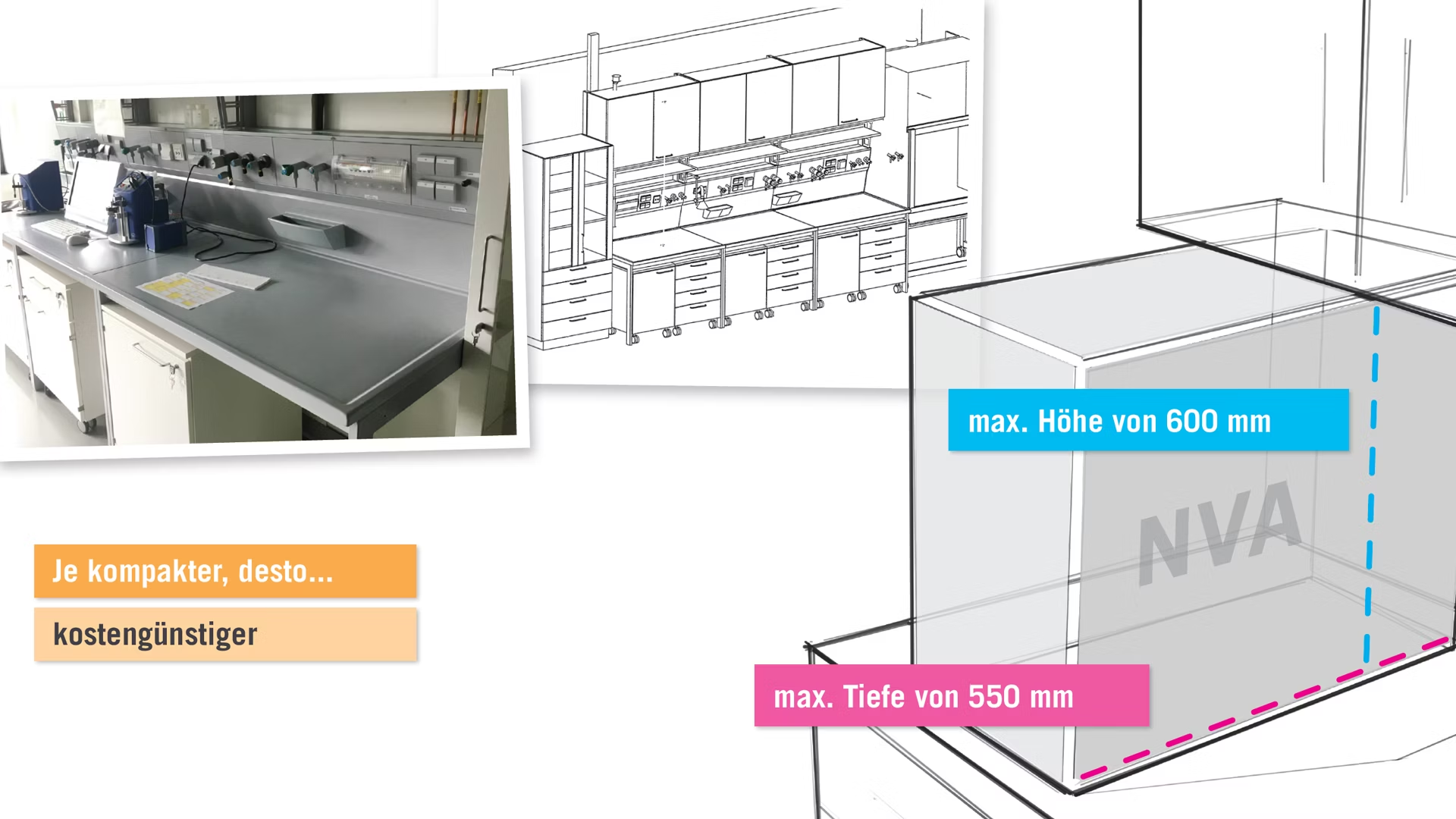
Design and ergonomics of the fully automated nano machine
It was specified that the nanocolloids should be produced in the highest possible purity. Starting materials should be three precious metals (gold, silver and platinum) on the one hand and a colloid medium (fluid) on the other.
For example, we needed both a replaceable material cartridge and three liquid containers, because in addition to the fluid, we also needed a vessel for the liquid to flush the system and a stabilizer medium.
In addition, a delivery quantity was defined as a measure of the intended collection vessel.
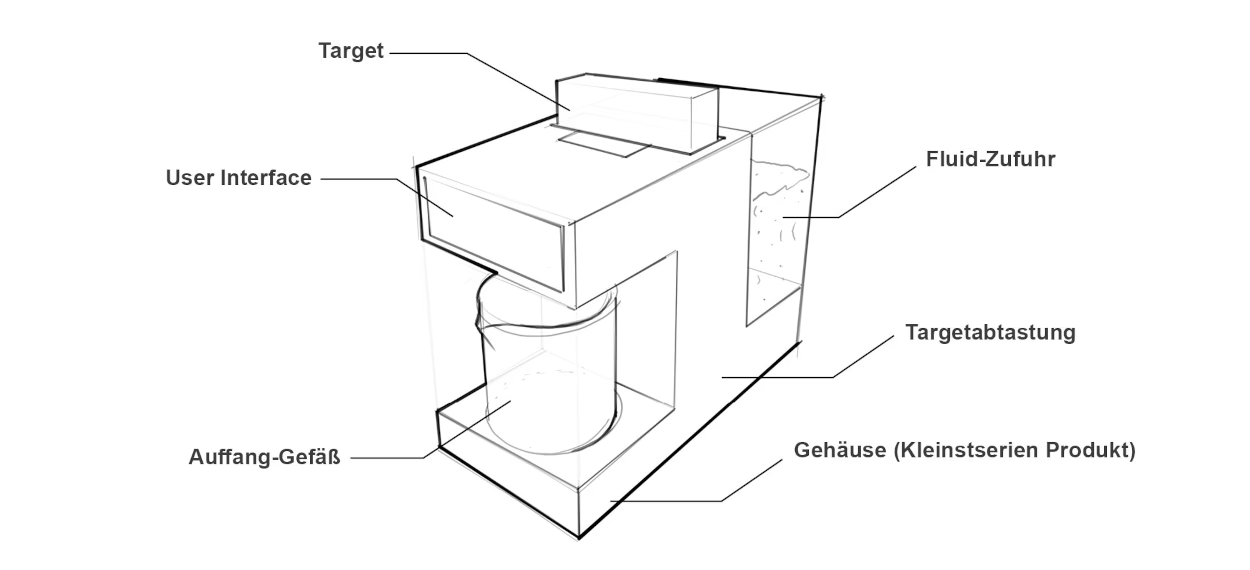
While the University of Duisburg-Essen and CryLaS carried out various test series to determine prerequisites for optimal ablation productivity (colloid production process), we created initial ergonomics and topology concepts based on key data known at the time.
This involved answering the questions beforehand about what functions the vending machine has and what requirements must be met in the area of conflict between users, environment and technology.
The following subject areas could be defined by the schematic drawing of the fully automated nanomachine:
- fluid supply
- Target
- User interface
- collection vessel
- internal functioning
- housing construction
In this way, it was possible to determine which factors were set and for which sub-areas new concepts were needed.
To support this, we created a Process matrix. Based on the plan, we were able not only to simulate a detailed course of action by the user, but also to disclose weak points and potential risks in the process.
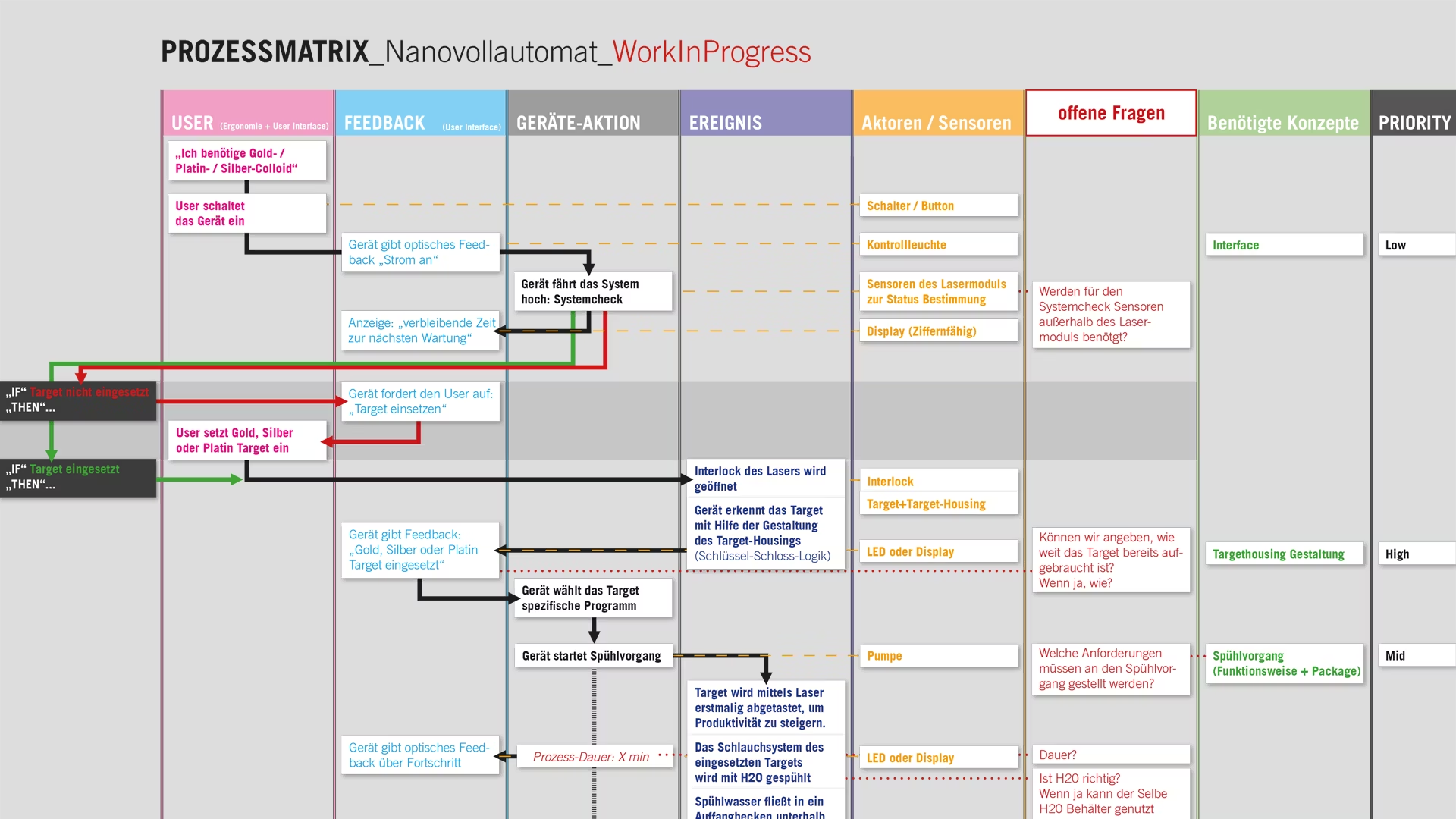
In order to ensure good device ergonomics, a particular focus was on examining the interaction points between humans and devices. As a result, we were able to define areas of action. These include operation through the digital interface, filling and replacing the fluid tanks, inserting or replacing the target housings and removing the finished precious metal colloid.
Design, development and testing of device technology
By transferring the ejection mechanism of a Nintendo 64 console, we were able to develop simple and robust operating concepts.
In order to test ergonomics and function, we made mockups of three favorite design variants. At this early stage of the process and in the development of these ergonomic concepts, “design” in the sense of an aesthetic, external design did not yet play a role. It is important that the functionality of a device is ensured first and that the aesthetics are then coordinated with the function.
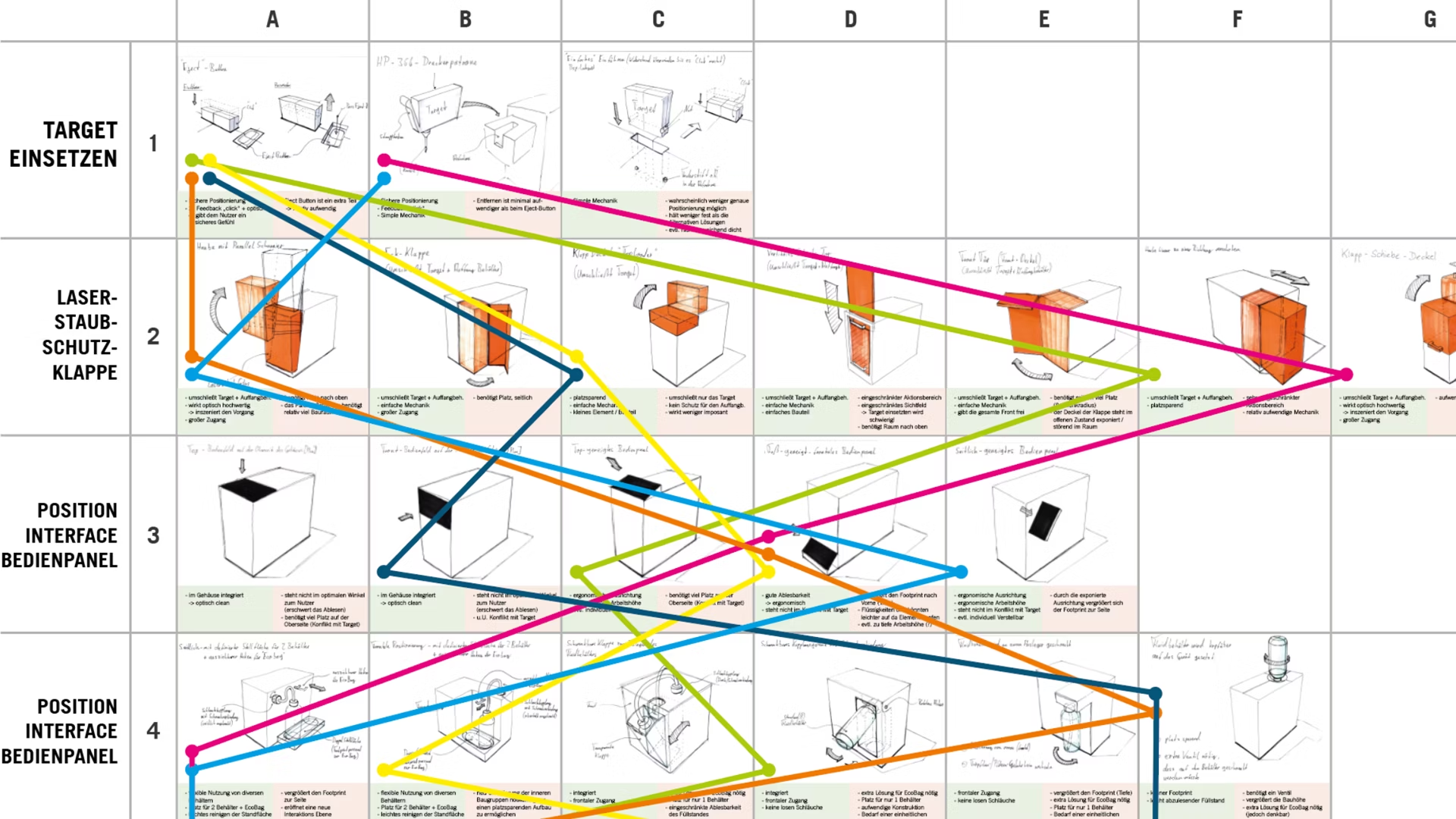
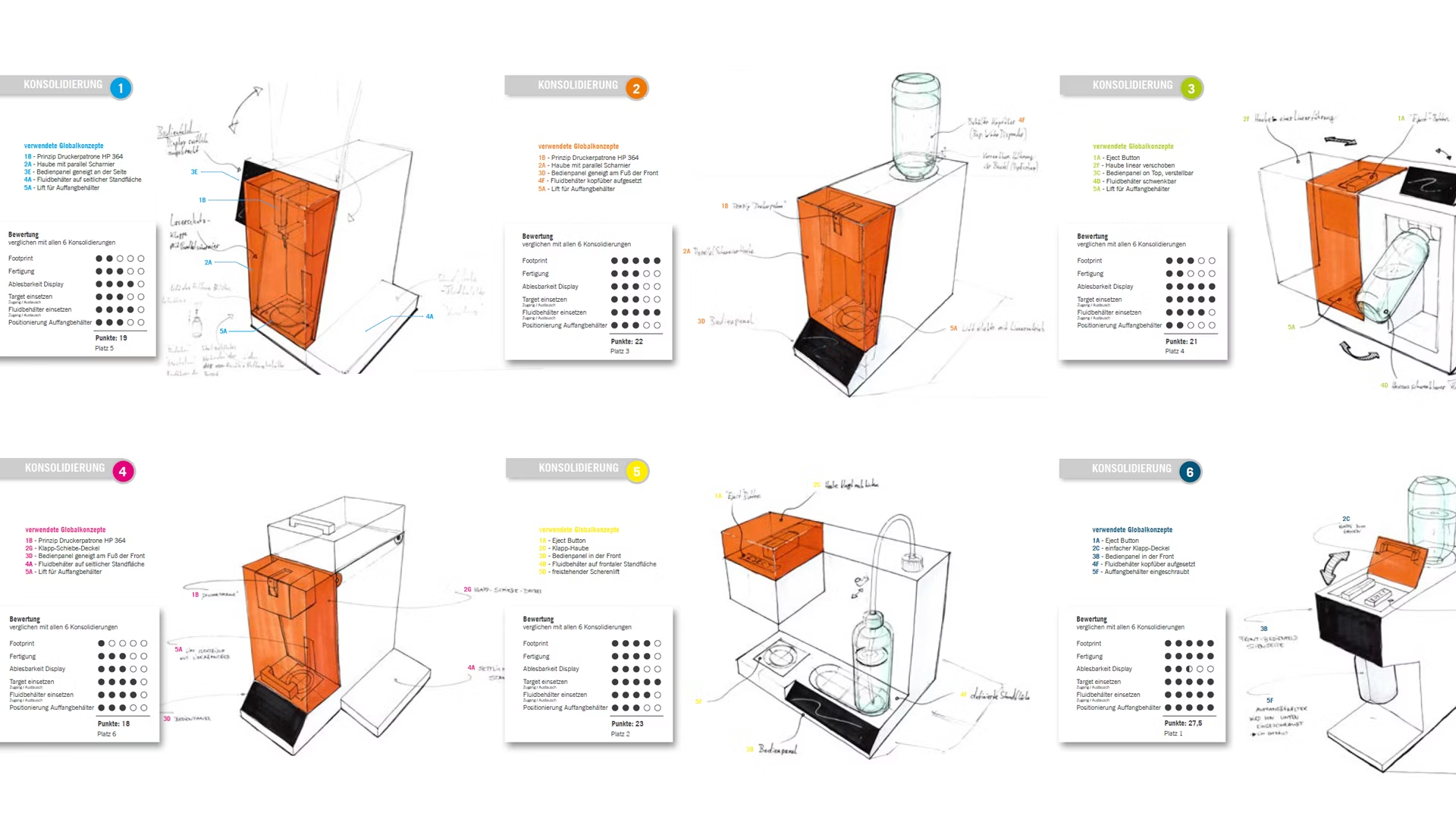
We had potential users test and comment on the resulting models in the product environment over a longer period of time. As a result, we were able to correct errors through early test phases and ensure that our concepts worked in field testing.
Our workshop infrastructure also proved to be necessary and helpful in this project. We developed a removable material cartridge, which we made in our in-house 3D laboratory using 3D printing. We provided the cartridge to the university to check its function and tightness in test series and to test it in conjunction with our developed ejection mechanism.

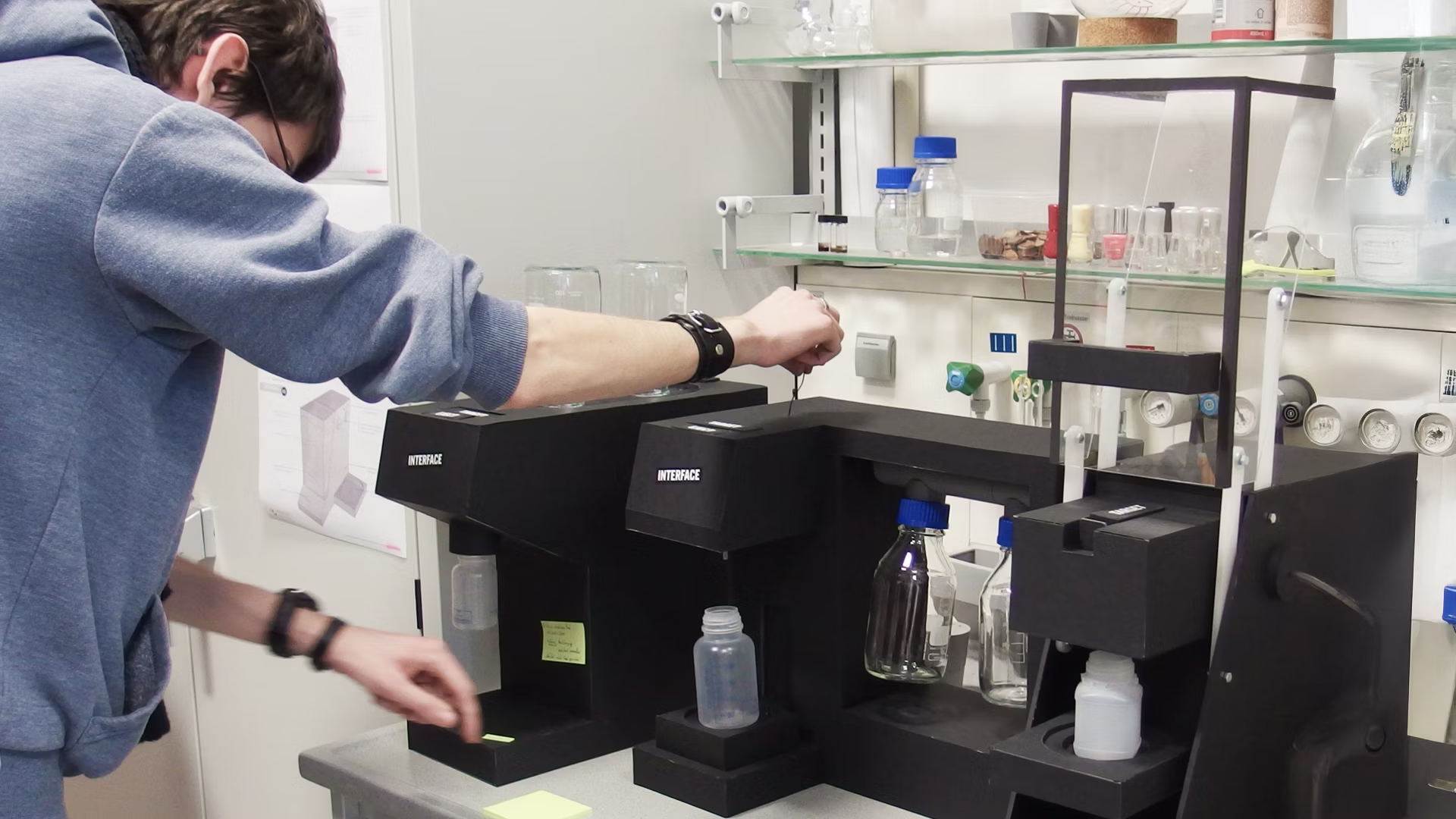
“How can we imagine the housing? ”
The next step was to design and technically implement the vending machine housing. This was an important step, because so far we only had a concept and, thanks to the prototypes, an idea of how the structure would be. At first, it was difficult for the project partners to imagine how to turn the black cardboard boxes into a real device. What we needed was a suitable visualization. In addition to the many competencies, the designer's ability to turn ideas into real products is the decisive factor.
We developed a vending machine design that was aesthetic, based on ergonomic findings, met all safety requirements and was easy to implement in accordance with the manufacturing method.
The small series of 20-500 pieces required manufacturing methods without expensive mold or device construction. Here it became clear once again that, even under severe restrictions in terms of manufacturing options, there is no need to make any compromises in design. Since we have already worked successfully on projects with similar issues in the past, we were able to draw on our experience in designing with bent and bent sheet metal parts.
Taking into account the catalog of requirements, two design variants were created. One variant impressed with its minimal floor space, whereas the other variant was based on frontal operation as a central feature of the design. These were presented and discussed at a project meeting. The main difference is the location of the two fluid containers. The “easy front access” variant unanimously impressed all project partners in terms of handling and design potential.

Iteration loops are part of everyday life for us
Since the previous laser system was not powerful enough and would not have been competitive on the market in this configuration, a stronger laser beam source had to be used and tested again. The alternative laser system finally achieved the desired productivity. As a result, the device topology had to be revised and thus the design and CAD had to be adapted to the new, larger technical space.
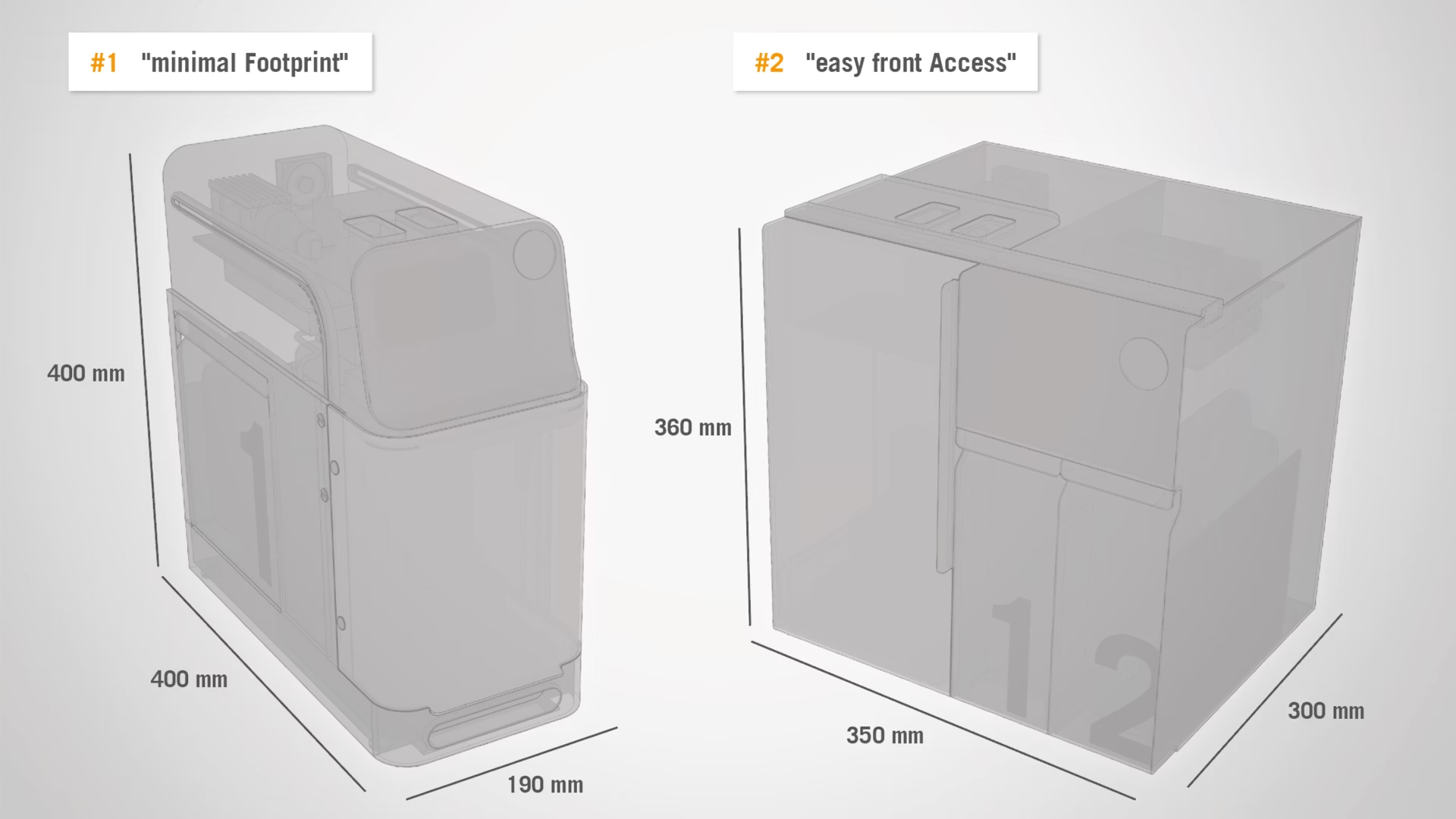
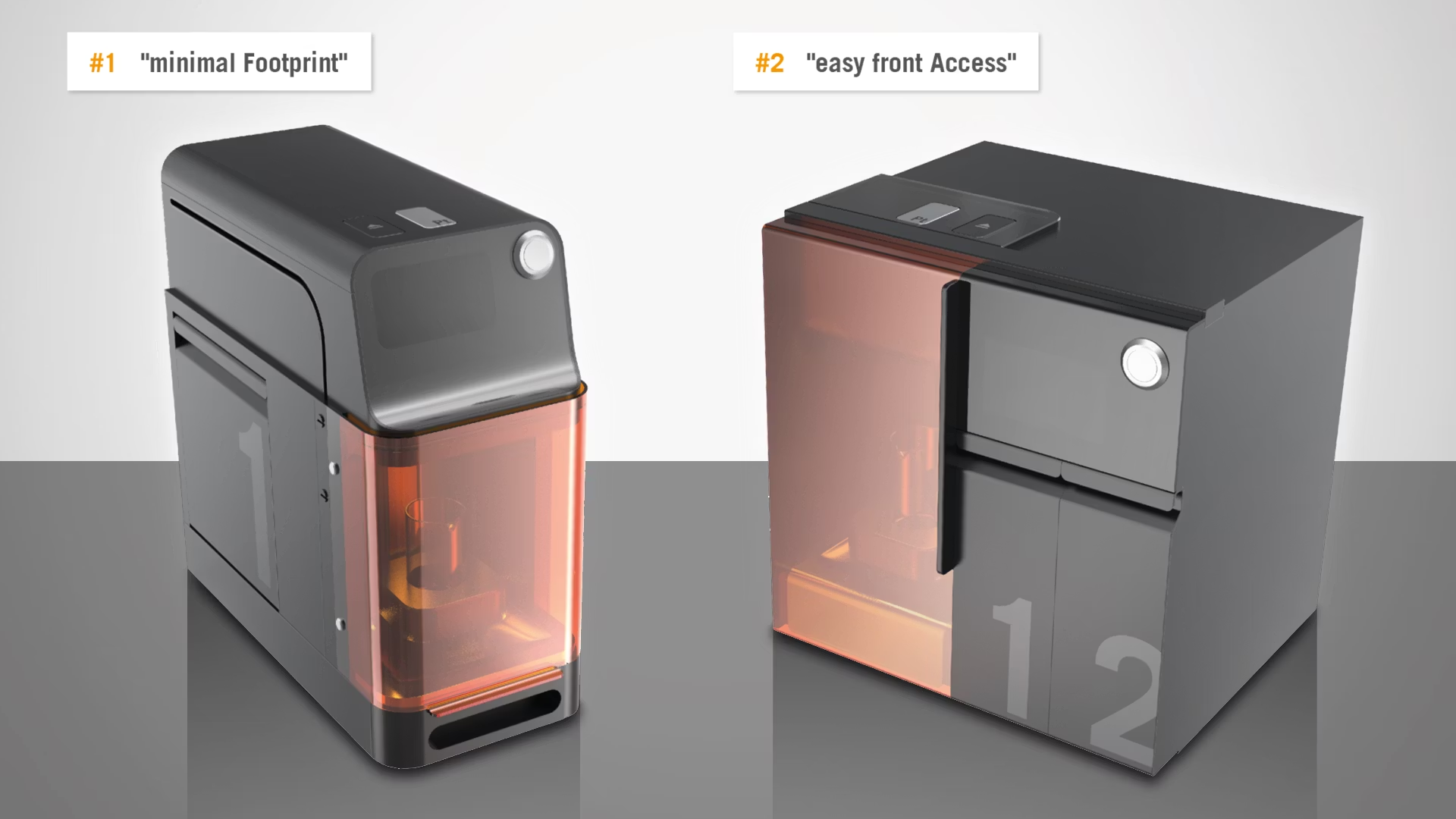
Correction loops are part of the development process and are valuable in early phases, as it is still possible to implement them without great costs. These types of adjustments and optimizations are also part of our daily business in other projects.
In particular, the aspect of possible scaling, which was already discussed when evaluating the two design variants, now proved to be a major advantage. In this way, the adaptation could be implemented without changing the character and original design concept of the vending machine.
GUI
Our area of responsibility also included the development of the user interface for the digital interface in combination with the operation of hardware actions. For this purpose, extensive testing and monitoring of the users' actions with the hardware took place. The development took place on the basis of the Interface Process Matrix developed by us.
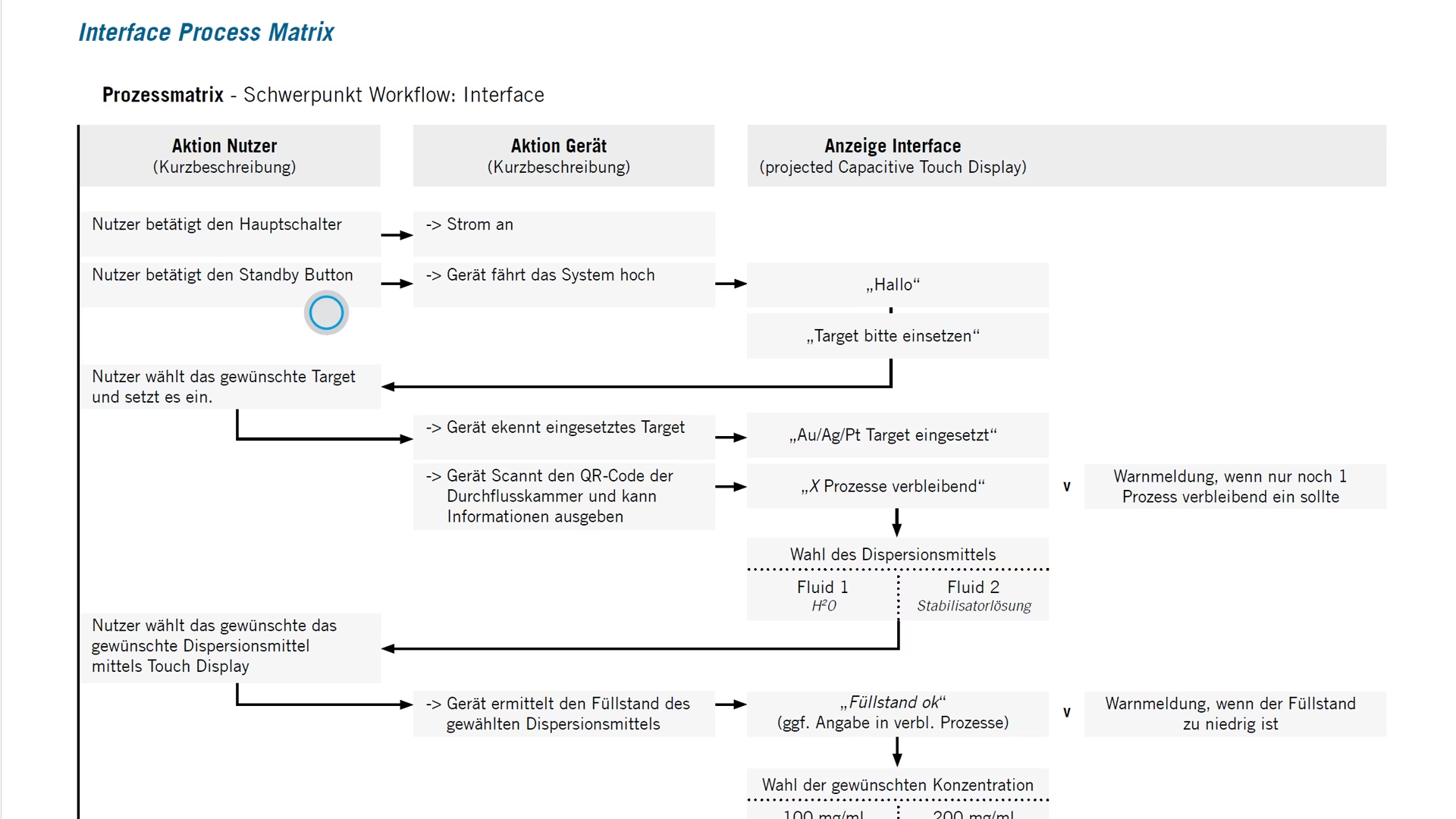
prototyping
Our final work package consisted of implementing the developed design in our prototype workshop. 100% of the housing in the prototype stage can be dismantled in order to be able to carry out subsequent changes. For example, instead of permanent welded connections, the housing parts were screwed together for the time being. Later, in series production, various screw connections can be replaced by welding points, which further reduces assembly costs and production costs. After receiving the externally manufactured housing parts, which were previously designed by us in CAD, we were able to start assembling the functional prototype. The first two fully automatic nano machines were created step by step from bent and bent parts, milled parts, screws and 3D printed parts, through painting, assembly and gluing with product graphics.
The project was completed by inserting the mounting plate with the laser system and connecting the housing and technical unit.
The result is two functional prototypes which, as intended, can be used to present the project idea at trade fairs or similar events and for initial field tests.
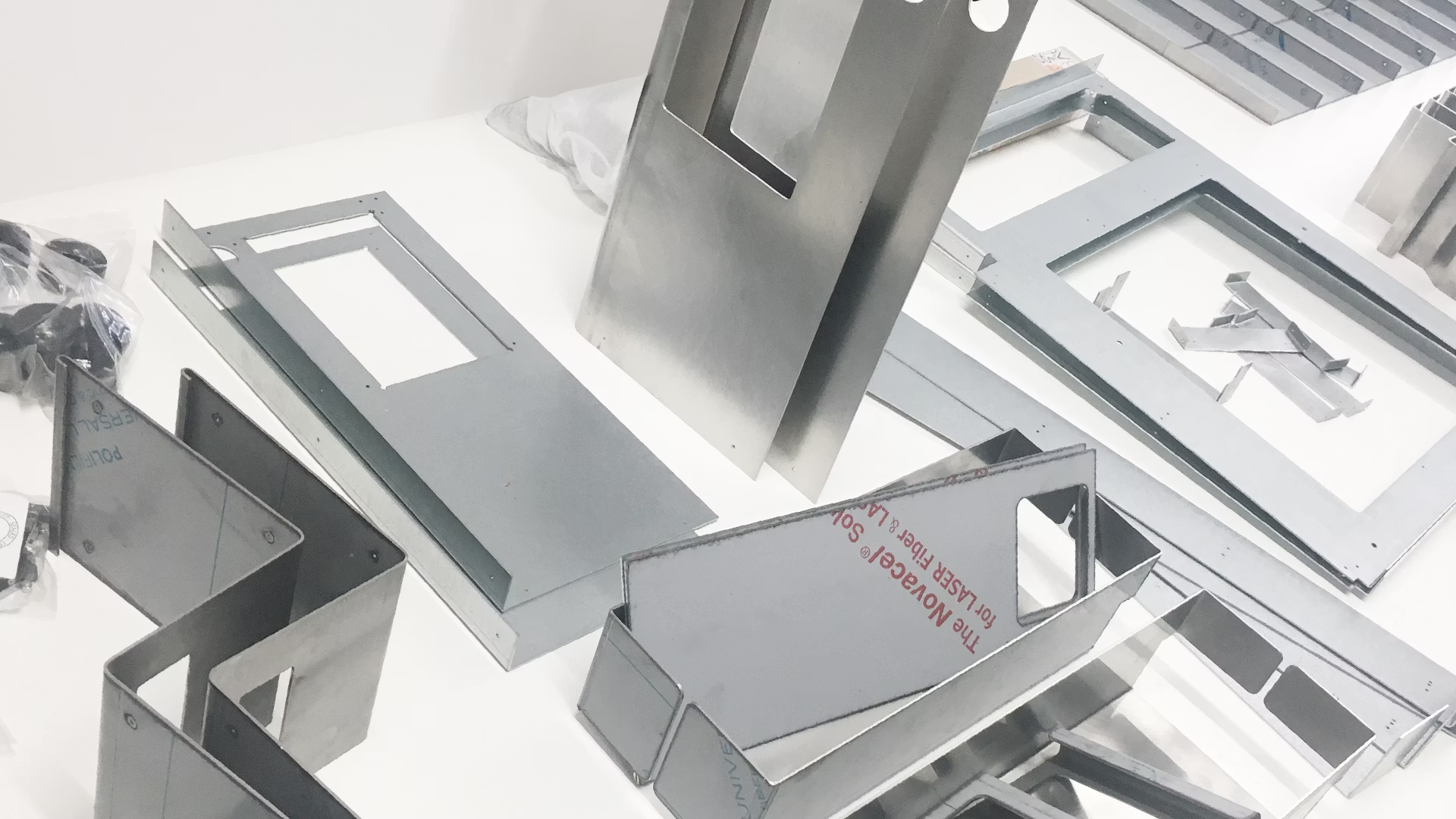
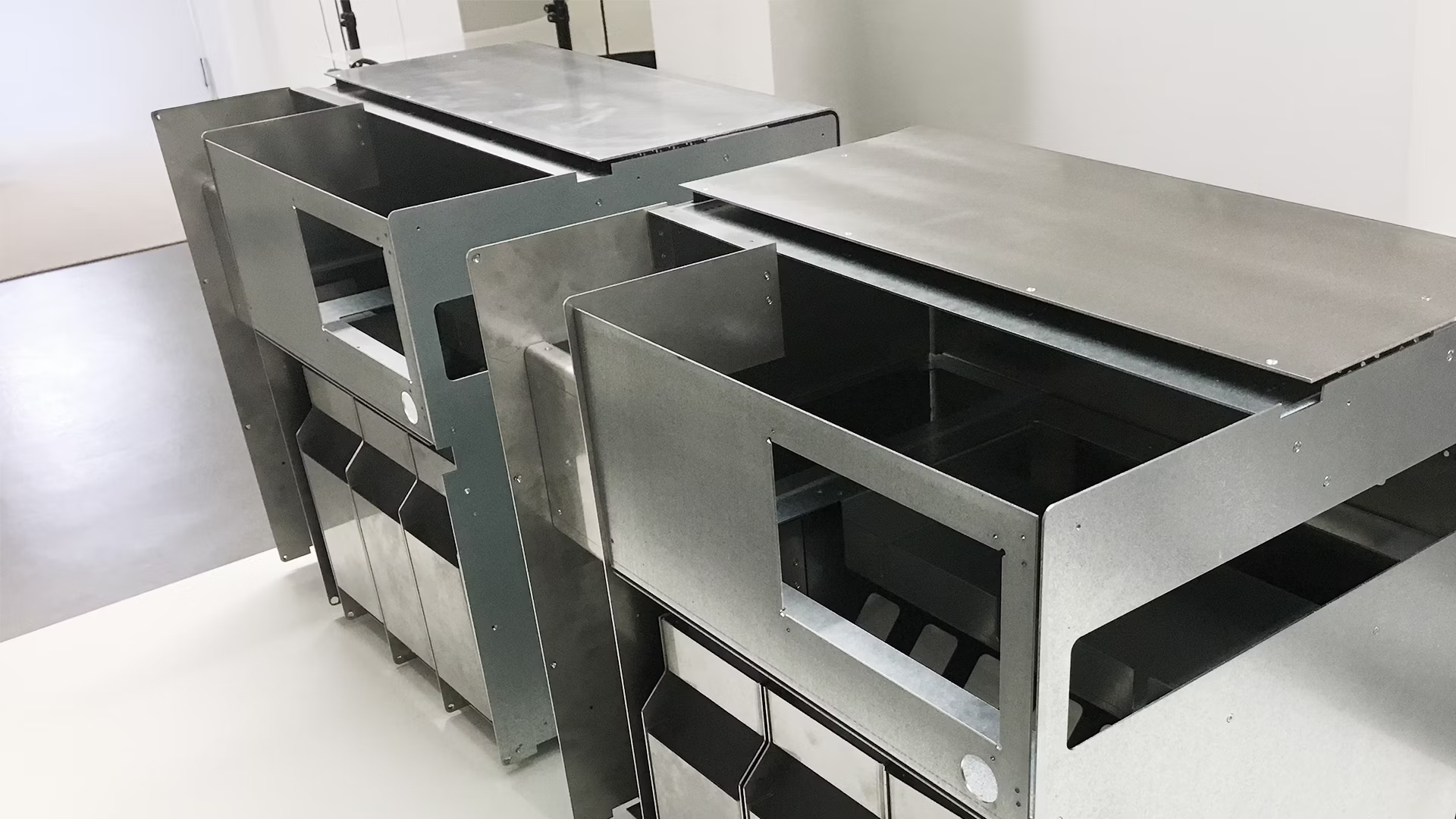
The result



